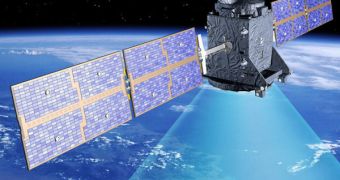The massive, 8.0-scale tremor that struck the Sichuan province in China on May 12, 2008, claimed the lives of more than 85,000 people. It also caused massive damage to the country's infrastructure, and was felt in Beijing, some 1,500 kilometers away from its shallow epicenter, just 12 miles beneath the surface. Now, using satellite data, Chinese experts attempt a first explanation of the extraordinary chain of geological events that led to the catastrophe.
“One of the very fundamental issues for understanding an earthquake is to know how the rupture is distributed on the fault plane, which is directly related to the amount of ground shaking and the damage it could cause at the surface,” China Earthquake Administration (IGCEA) Institute of Geology expert Dr. Jianbao Sun explains. In cooperation with IGCEA colleague Professor Zhengkang Shen, and experts from the Peking University Department of Geophysics, Sun acquired two different sets of satellite radar data, from ESA's Envisat satellite, and Japan's ALOS satellite.
The European Space Agency (ESA) provided C-band data from the Advanced Synthetic Aperture Radar (ASAR), while the Japanese offered information sets from the Phased Array type L-band Synthetic Aperture Radar (PALSAR) aboard their observation satellite. An analysis technique known as SAR Interferometry (InSAR) was then used to combine the two separate sets, which resulted in 'interferogram' images covering the entire coseismic rupture region, as well as its neighboring areas.
“This is perhaps the very first time people have seen the complete deformation field produced by an earthquake on such a large scale,” Sun reveals, adding that the image showed in great detail the massive amount of deformation in the planet's crust that the earthquake caused last May. The investigation also highlighted the fact that the solid rock barriers in the crust, known as fault junctions, which generally prevented earthquakes from spreading between crust segments, could not withstand the massive amounts of energy the 2008 tremor unleashed.
“These fault junctions are barriers, whose failures in a single event allowed the rupture to cascade through several fault segments, resulting in a major 7.9-earthquake. Earthquakes across fault segments like this are estimated to happen about every 4000 years,” Shen reveals. Details of the study have been accepted for publication in this month's issue of the respected scientific journal Nature Geoscience, the team says.

 14 DAY TRIAL //
14 DAY TRIAL //